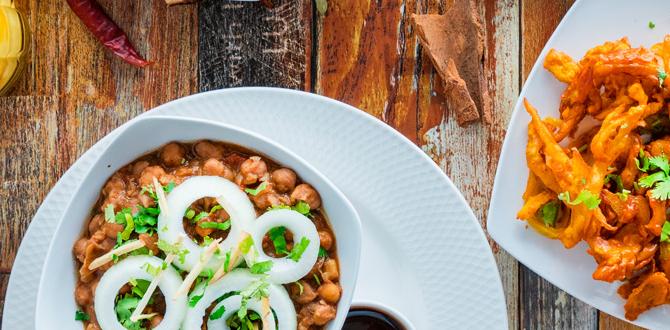Bhutan Neighborhood Guide: Proven Essential for a Stress-Free Travel Experience. Planning your trip to Bhutan? This guide breaks down the essential neighborhoods, helping you find the perfect base for your adventure. Discover key attractions, local tips, and how to navigate each area with ease, ensuring comfort and enjoyment throughout your journey.
Bhutan, the Land of the Thunder Dragon, offers a truly unique travel experience. Deciding where to stay can feel a bit overwhelming, especially if it’s your first time. You want to be close to the sights, enjoy local culture, and feel secure, right? Don’t worry, this guide is here to help! We’ll walk you through the most essential areas of Bhutan, highlighting what makes each one special. Get ready to discover the perfect spot that fits your travel style and makes your Bhutanese adventure unforgettable.
Understanding Bhutan’s Key Destinations: Your Neighborhood Map
Bhutan isn’t about sprawling suburbs; it’s about vibrant towns and valleys, each with its own charm and accessibility. For travelers, understanding the main hubs is key to tailoring your itinerary. Think of these “neighborhoods” as your launchpads for exploring the magic of this Himalayan kingdom. Each offers a different perspective, from bustling cultural centers to serene mountain retreats.
Thimphu: The Capital City Vibe
As the capital, Thimphu is the most developed and bustling area in Bhutan. It’s where you’ll find a unique blend of tradition and modern life.
Why Stay in Thimphu?
Accessibility: It’s the main entry point for most travelers, with flights arriving at Paro International Airport (a scenic drive away).
Amenities: You’ll find the widest range of hotels, guesthouses, restaurants, and shops.
Cultural Hub: Home to the National Memorial Chorten, the majestic Buddha Dordenma overlooking the valley, and the Folk Heritage Museum.
Government & Business Center: This is where Bhutan’s administrative heart beats, offering insights into contemporary Bhutanese life.
Essential Thimphu Spots:
City Center: Ideal for easy access to shops, restaurants, and major landmarks.
Motithang Area: Known for the Takin Preserve and some of the more luxurious hotels, offering a quieter feel.
Upper Thimphu Valley: Offers stunning views and is home to more secluded resorts and monasteries.
Travel Tip:
If you’re arriving by air, plan for a transfer from Paro airport to Thimphu, which takes about 1.5 hours. Pre-booking your transport is highly recommended for a smooth arrival. For those managing personal care needs, like adult diapers or child diapers, Thimphu offers the most reliable access to pharmacies and supply stores should you need a top-up.
Paro: The Gateway and Valley Charm
Paro is most famous for its international airport, but the valley itself is a treasure trove of historical sites and natural beauty. Many travelers choose to stay here before or after their flight.
Why Stay in Paro?
Proximity to Airport: Convenient for early morning or late-night departures/arrivals.
Iconic Landmarks: Home to the breathtaking Tiger’s Nest Monastery (Paro Taktsang) and the Rinpung Dzong.
Serene Atmosphere: The valley offers a more tranquil setting compared to Thimphu.
Scenic Beauty: Beautiful rice paddies, traditional farmhouses, and the Paro River make for picturesque surroundings.
Essential Paro Spots:
Paro Town: The main hub with hotels, restaurants, and souvenir shops.
Areas near Rinpung Dzong: Offers convenient access to this significant fortress.
Higher Hillside Resorts: Many hotels are situated on hillsides offering panoramic views of the valley, often a bit further out but incredibly peaceful.
Travel Tip:
The hike to Tiger’s Nest is a must-do. It’s best to acclimatize for a day or two in Paro before tackling this challenging but rewarding trek. Ensure you have comfortable walking shoes and adequate hydration. We often pack extra adult diapers or discreet bladder support options for long treks like these, providing an extra layer of confidence and comfort, especially when facilities are few and far between.
Punakha: The Ancient Capital and Tropical Paradise
Nestled at a lower altitude, Punakha boasts a warmer climate and is renowned for its stunning dzong and fertile agricultural land. It served as Bhutan’s capital until 1955.
Why Stay in Punakha?
Punakha Dzong: Arguably the most beautiful dzong in Bhutan, situated at the confluence of two rivers.
Warmer Climate: It’s a popular destination during the colder months due to its mild weather.
Charming Villages and Rural Scenery: Offers a glimpse into traditional Bhutanese rural life.
Chimi Lhakhang: The “Temple of Fertility,” known for its unique traditions.
Essential Punakha Spots:
Punakha Town: A smaller, more laid-back town compared to Paro and Thimphu.
Areas along the Mo Chhu and Pho Chhu Rivers: Many resorts are situated with beautiful river views.
Villages near Chimi Lhakhang: For those seeking a truly rural and immersive experience.
Travel Tip:
The drive from Thimphu to Punakha involves crossing the Dochula Pass, offering spectacular Himalayan views on a clear day. Be prepared for winding mountain roads. If you have children traveling, especially those who might need child diapers, this region’s warmer climate can make keeping them clean and comfortable a bit easier, but always have extras on hand as planned routines can be disrupted.
Phobjikha Valley: The Glacial Haven
This vast, U-shaped glacial valley is a designated conservation area and a winter home for the endangered Black-necked Cranes. It embodies serene, natural beauty.
Why Stay in Phobjikha?
Natural Beauty: A stunning, wide-open valley perfect for nature lovers and hikers.
Rural and Tranquil: Experience a slower pace of life and authentic village charm.
Black-necked Crane Sanctuary: If visiting in winter (late October to March), this is the place to see them.
Gangtey Monastery: Overlooking the valley, this is a significant Nyingmapa monastery.
Essential Phobjikha Spots:
Gangtey Village: The primary settlement with guesthouses and the monastery.
Areas around the Crane Information Centre: Convenient for understanding the local ecosystem.
Farm Stays: For an intimate experience with local life.
Travel Tip:
Phobjikha is best visited during the day as part of a tour or for an overnight stay. Accommodation options are more limited and rustic compared to the main towns. If planning extensive nature walks or if traveling with someone requiring adult diapers for peace of mind during extended periods away from facilities, ensuring you have a sufficient supply is crucial.
Planning Your Bhutan Itinerary: Neighborhoods at a Glance
To help you visualize, here’s a quick comparison of the key “neighborhoods” or destinations in Bhutan:
| Destination | Pace | Key Attractions | Best For | Accommodation Style |
|---|---|---|---|---|
| Thimphu | Bustling, Moderate | Buddha Dordenma, Memorial Chorten, Museums | Culture, amenities, city explorers | Wide range: Hotels, Guesthouses |
| Paro | Relaxed, Scenic | Tiger’s Nest, Paro Dzong, Airport | Iconic landmarks, nature, convenient travel | Hotels, Guesthouses, Valley Resorts |
| Punakha | Leisurely, Tropical | Punakha Dzong, Chimi Lhakhang | History, warmer climate, rural charm | Hotels, Guesthouses, Riverside Resorts |
| Phobjikha Valley | Tranquil, Natural | Black-necked Cranes, Gangtey Monastery, Valley walks | Nature lovers, bird watchers, peace seekers | Guesthouses, Farm Stays, Limited Hotels |
Navigating Bhutan: Practical Tips for Every Traveler
Regardless of where you choose to base yourself, a few practical tips will enhance your Bhutanese journey.
Transportation Within Bhutan
Since Bhutan is a protected kingdom and travel is highly regulated, most tourists travel with a pre-arranged package that includes a guide and a driver. However, understanding the options is still helpful:
Private Vehicle with Driver: This is the standard for most tourists. It offers flexibility and comfort, allowing you to stop at scenic viewpoints and adjust your schedule slightly. Your guide will manage all arrangements.
Taxis: Available in Thimphu and Paro for local travel. They are metered or can be negotiated for shorter trips.
Walking: Many of the main attractions within towns are walkable. For hikes like Tiger’s Nest, walking is essential.
What to Pack for Comfort and Convenience
Packing smart is crucial for a stress-free trip. We always recommend versatile items that can be layered.
Essential Items:
Comfortable Footwear: For extensive walking and hiking.
Layered Clothing: Bhutan’s weather can change, especially in the mountains.
Rain Gear: A light, waterproof jacket is useful year-round.
Sun Protection: Hat, sunglasses, and sunscreen are vital, even on cooler days.
Personal First-Aid Kit: Including any essential personal medications.
Reusable Water Bottle: To stay hydrated and reduce plastic waste.
Camera: To capture the stunning landscapes and culture.
Special Considerations for Comfort Needs:
For travelers who require additional support, such as adult diapers or child diapers, packing enough for your entire trip is paramount. Bhutan has limited access to specialized products outside of the main cities.
Adult Incontinence Products: If you use adult diapers, pack more than you think you’ll need. Absorbent underwear, briefs, and pads are all options depending on your needs. Brands like Depend offer a range of products designed for active lifestyles, providing security and discretion. Ensure they are sealed and protected from moisture in your luggage.
Child Diapers and Wipes: For parents traveling with young children, factor in plenty of child diapers, swim diapers (if you plan to visit hot springs or pools), and wipes. Keeping little ones comfortable can make a huge difference to the whole family’s enjoyment. Brands like Pampers or Huggies are readily available in many parts of the world, but a good starting supply from home is always wise.
Discreet Travel Bags: Consider packing a small, discreet bag for carrying a few extra diapers or other personal care items for day trips.
Currency and Payments
The local currency is the Ngultrum (BTN). Indian Rupees (INR) are also widely accepted.
ATMs: Available in Thimphu and Paro, but can be unreliable. It’s best to carry sufficient cash.
Credit Cards: Accepted in larger hotels and souvenir shops, but not for everyday expenses.
Connectivity
Internet access can be spotty, especially outside of Thimphu and Paro.
SIM Cards: You can purchase a local SIM card for data and calls, but coverage is limited.
Wi-Fi: Available in most hotels and some restaurants, but it’s often slow. Embrace the opportunity to disconnect!
Exploring Bhutan’s Cultural Heart: A Deeper Dive
Beyond accommodation and logistics, understanding the cultural pulse of each “neighborhood” will enrich your experience.
Thimphu: A Blend of Old and New
Thimphu is a fascinating juxtaposition. You can visit the bustling Centenary Farmers Market, where locals trade fresh produce, and then, just a short drive away, find the serene tranquility of the National Institute for Zorig Chusum (School of Traditional Arts and Crafts), where students learn the 13 traditional Bhutanese crafts.
Key Activities:
Visiting the National Memorial Chorten for a glimpse of daily devotion.
Exploring the Folk Heritage Museum to understand rural Bhutanese life.
Taking in panoramic views from the Buddha Dordenma statue.
Shopping for local crafts and textiles.
Paro: The Spiritual Ascent
The journey to Tiger’s Nest is more than just a hike; it’s a pilgrimage. The spiritual energy of the place is palpable.
Key Activities:
The iconic hike to Paro Taktsang (Tiger’s Nest Monastery). Remember to stay hydrated and take breaks as needed. Utilizing discreet incontinence products can provide peace of mind for longer treks, allowing you to focus on the breathtaking scenery without worry.
Exploring Rinpung Dzong, a stunning example of Bhutanese architecture.
Visiting the National Museum of Bhutan, housed in an old watchtower (Ta Dzong).
Experiencing a traditional Bhutanese hot stone bath – a perfect way to relax after a long day.
Punakha: The Valley of Bliss
Punakha’s charm lies in its lush landscapes and its historical significance as the former capital. The Punakha Dzong, situated majestically at the confluence of the Pho Chhu and Mo Chhu rivers, is a sight that stays with you.
Key Activities:
Admiring the grandeur of Punakha Dzong.
Walking through rice paddies to reach Chimi Lhakhang.
Enjoying the warmer climate and serene riverbanks.
Crossing the Punakha Suspension Bridge, Bhutan’s longest suspension bridge, offering fantastic views.
Phobjikha: Embracing Nature’s Embrace
This valley is a sanctuary for nature. Its open expanse and rolling hills are perfect for gentle walks and immersing yourself in the natural world.
Key Activities:
Observing the Black-necked Cranes during winter months.
Walking the Gangtey Nature Trail.
Visiting Gangtey Monastery.
Enjoying the profound silence and pristine environment.
Essential Resources for your Bhutan Trip
To further aid your planning and ensure you have all your travel essentials, consider these resources:
Bhutan Tourism Council: For official guidelines and visitor information. You can find helpful insights on their website for current regulations and travel advice. Tourism Council of Bhutan
List of Tour Operators: The Tourism Council also provides a list of licensed tour operators who can help you craft your perfect itinerary.
Travel Gear Reviews: For packing advice on luggage and accessories, sites like Wirecutter’s travel section offer excellent, unbiased reviews.
Frequently Asked Questions About Bhutan Neighborhoods
Q1: What is the best neighborhood in Bhutan for first-time visitors?
A1: For first-time visitors, Thimphu is usually the recommended neighborhood. It offers the most infrastructure, a wide range of accommodation options, and a good introduction to Bhutanese culture and modern life, serving as a convenient base for day trips.
Q2: Which area is best for experiencing nature and tranquility in Bhutan?
A2: The Phobjikha Valley is unparalleled for nature and tranquility. Its wide, open spaces, birdwatching opportunities, and peaceful atmosphere make it ideal for those seeking to disconnect and immerse themselves in the natural world.
Q3: Is it easy to find reliable transportation between different “neighborhoods” in Bhutan?
A3: Yes, as most tourists travel with pre-arranged packages that include a private vehicle and driver for the duration of their trip. If you are arranging transport independently or for specific local travel, licensed taxis are available in the main towns.
Q4: What should I pack for the weather in different Bhutanese districts?
A4: Layering is key. Pack light, moisture-wicking base layers, a warm fleece or sweater, and a waterproof and windproof outer jacket. Weather can vary significantly between lower valleys like Punakha and higher altitudes like Phobjikha or Paro. It’s also wise to pack extra personal care items, like adult diapers or child diapers, as specific brands or types may be harder to find outside major towns.
Q5: Can I use my credit card in all “neighborhoods” in Bhutan?
A5: Credit cards are accepted in larger hotels and some souvenir shops in Thimphu and Paro, but it’s crucial not to rely on them for all transactions. Smaller towns and rural areas are mostly cash-based. It’s advisable to carry enough Bhutanese Ngultrum (BTN) or Indian Rupees (INR) for most of your expenses.
Q6: What are the accommodation options like in Bhutan’s less-visited areas?
A6: Accommodation in less-visited areas like Phobjikha tends to be more rustic and focused on guesthouses or farm stays, offering a more authentic experience. While comfortable, they won’t have the same amenities as hotels in Thimphu or Paro.
Q7: How important is pre-booking accommodation and travel in Bhutan?
A7: Extremely important. Bhutan has a high-value, low-impact tourism policy. All tourists (except Indian, Bangladeshi, and Maldivian nationals) must book their trip through a licensed Bhutanese tour operator, which includes a minimum daily package rate covering




